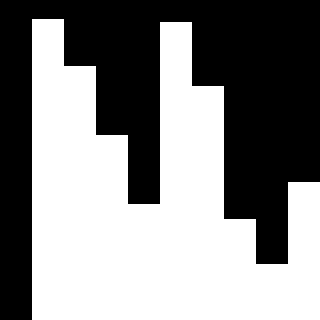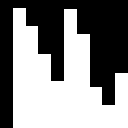Workshop GLSL - Noise - Chapter 6.3 - No Interpolation

Explanations
Let’s get back a little to understand interpolation
#define PROCESSING_COLOR_SHADER
uniform float time;
uniform vec2 resolution;
float rand(float x){
return fract(sin(x * 12.9898) * 43758.5453);
}
float noise(float x, float frequency)
{
float v = x * frequency;
float ix1 = floor(v);
float ix2 = floor(v + 1.0);
We don’t want to interpolate, just see random scaled
float fx = 0.0;
return mix(rand(ix1), rand(ix2), fx);
}
void main( void ) {
vec2 position = gl_FragCoord.xy / resolution.xy;
float y = noise(position.x + time * 0.1, 10.0);
float v = step(position.y, y);
gl_FragColor = vec4(v,v,v,1.0);
}
Result is as expected : some bars with random height
Full Code Source
#define PROCESSING_COLOR_SHADER
uniform float time;
uniform vec2 resolution;
float rand(float x){
return fract(sin(x * 12.9898) * 43758.5453);
}
float noise(float x, float frequency)
{
float v = x * frequency;
float ix1 = floor(v);
float ix2 = floor(v + 1.0);
float fx = 0.0;
return mix(rand(ix1), rand(ix2), fx);
}
void main( void ) {
vec2 position = gl_FragCoord.xy / resolution.xy;
float y = noise(position.x + time * 0.1, 10.0);
float v = step(position.y, y);
gl_FragColor = vec4(v,v,v,1.0);
}



